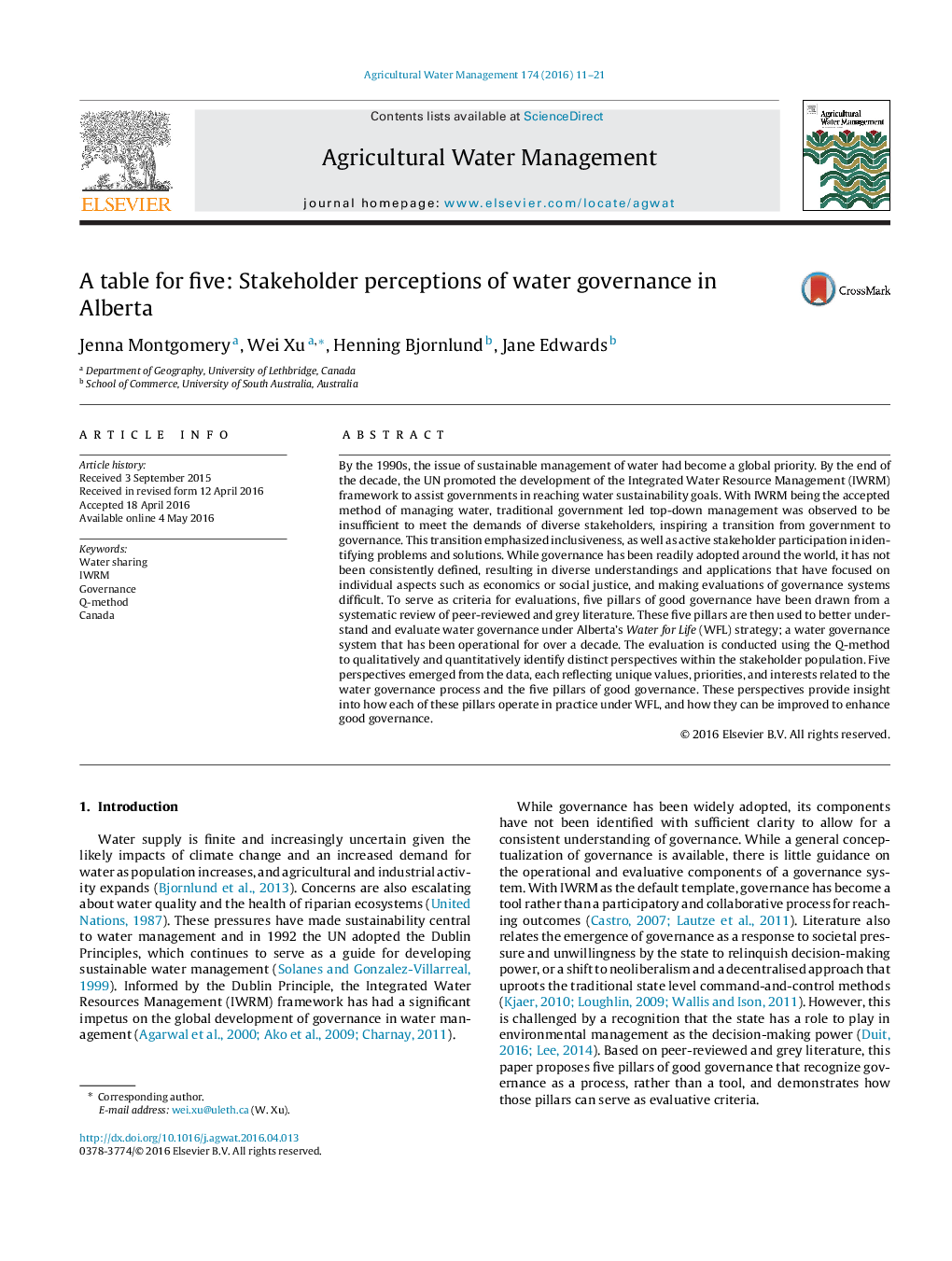| کد مقاله | کد نشریه | سال انتشار | مقاله انگلیسی | نسخه تمام متن |
|---|---|---|---|---|
| 4478215 | 1622906 | 2016 | 11 صفحه PDF | دانلود رایگان |
• Five pillars of good governance, accountability, adaptability, participation, rule of law and transparency, have been drawn from a systematic review of peer-reviewed and grey literature. Providing the criteria for the evaluation of governance processes, these five pillars are used to better understand and evaluate water governance under Alberta’s Water for Life (WFL) strategy.
• Using the Q-method to qualitatively and quantitatively identify distinct perspectives within the stakeholder population.
• Five perspectives emerged, labeled as “protector, opportunists, decentralists, sceptics and supporter,” reflecting unique values, priorities, and interests related to the water governance process and the five pillars of good governance.
By the 1990s, the issue of sustainable management of water had become a global priority. By the end of the decade, the UN promoted the development of the Integrated Water Resource Management (IWRM) framework to assist governments in reaching water sustainability goals. With IWRM being the accepted method of managing water, traditional government led top-down management was observed to be insufficient to meet the demands of diverse stakeholders, inspiring a transition from government to governance. This transition emphasized inclusiveness, as well as active stakeholder participation in identifying problems and solutions. While governance has been readily adopted around the world, it has not been consistently defined, resulting in diverse understandings and applications that have focused on individual aspects such as economics or social justice, and making evaluations of governance systems difficult. To serve as criteria for evaluations, five pillars of good governance have been drawn from a systematic review of peer-reviewed and grey literature. These five pillars are then used to better understand and evaluate water governance under Alberta’s Water for Life (WFL) strategy; a water governance system that has been operational for over a decade. The evaluation is conducted using the Q-method to qualitatively and quantitatively identify distinct perspectives within the stakeholder population. Five perspectives emerged from the data, each reflecting unique values, priorities, and interests related to the water governance process and the five pillars of good governance. These perspectives provide insight into how each of these pillars operate in practice under WFL, and how they can be improved to enhance good governance.
Journal: Agricultural Water Management - Volume 174, August 2016, Pages 11–21
